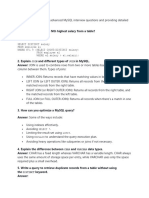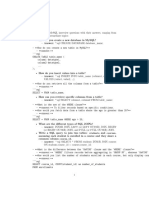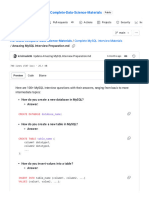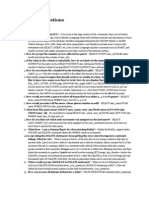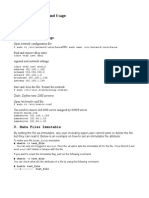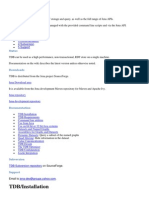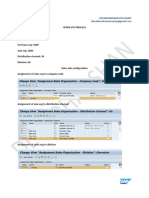0% found this document useful (0 votes)
18 views4 pagesCombined - MySQL - Questions 07 12 24
The document consists of a comprehensive list of MySQL questions covering both theoretical concepts and practical applications. It addresses various topics such as data types, SQL commands, query optimization, and database management techniques. The questions range from basic operations to advanced features like transactions, joins, and stored procedures.
Uploaded by
eshan.ali4713Copyright
© © All Rights Reserved
We take content rights seriously. If you suspect this is your content, claim it here.
Available Formats
Download as PDF, TXT or read online on Scribd
0% found this document useful (0 votes)
18 views4 pagesCombined - MySQL - Questions 07 12 24
The document consists of a comprehensive list of MySQL questions covering both theoretical concepts and practical applications. It addresses various topics such as data types, SQL commands, query optimization, and database management techniques. The questions range from basic operations to advanced features like transactions, joins, and stored procedures.
Uploaded by
eshan.ali4713Copyright
© © All Rights Reserved
We take content rights seriously. If you suspect this is your content, claim it here.
Available Formats
Download as PDF, TXT or read online on Scribd
/ 4
